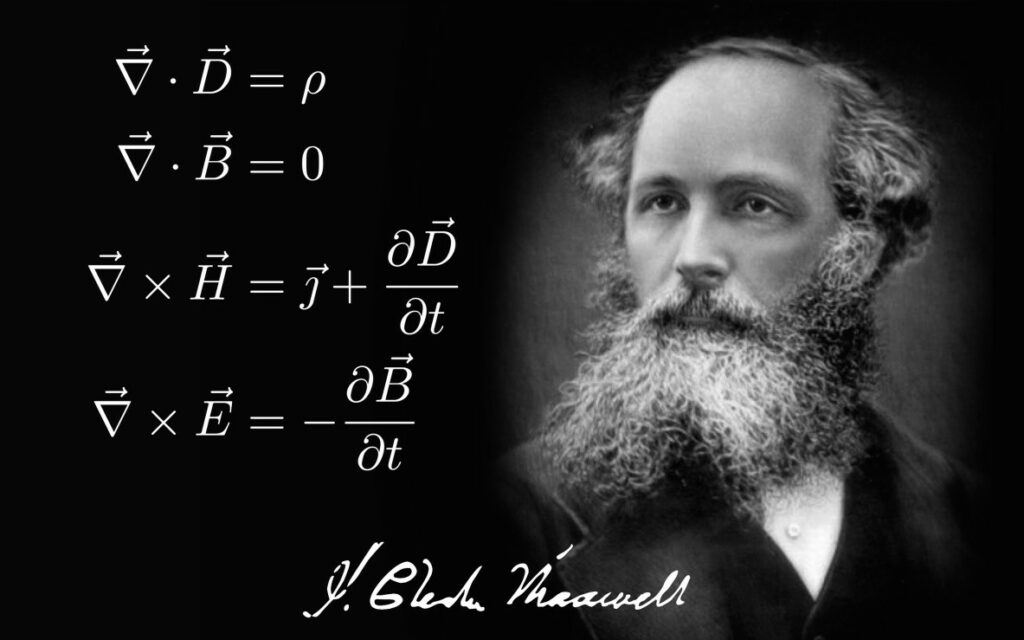
To listen to today’s reflection as a podcast, click here
You may not recognize Maxwell’s Equations.
But just by booting up your computer and opening this email, you’re enjoying one of the many things they’ve made possible in this world.
Between 1861 and 1862, about the time Abraham Lincoln was getting settled into the White House, the Scottish physicist and mathematician James Clerk Maxwell proposed that light, electricity, and magnetism are not three separate realities.
They are all phenomena of a single “something” that has come to be called electromagnetism.
Maxwell drafted four partial differential equations to show how magnetism, light, and electric current are intimately linked.
In the unlikely event you can’t dial them up from memory, you can see them in the image above.
So what’s the big deal?
Maxwell’s Equations have prompted the creation of electric circuits, radios, cameras, television, computers, motors, generators, and optical technologies, and have led to everything we know about quantum field theory and electromagnetic radiation.
Not bad for four scribbles on a chalkboard.
Dr. Walter Lewin, physics professor at MIT, tries to help his students experience the grandeur of Maxwell’s accomplishments. Several weeks into his undergrad course on electricity and magnetism, Lewin displays each of the four equations on massive screens surrounding the lecture hall.
“There is an intrinsic beauty in the way these equations talk to one another that is unbelievable. You can’t separate them!” he gushes.
Then he commands his students to gaze at the screens. “Look at them. Inhale them. Let them penetrate your brains. If you do so, you will never be the same!”
About this time you may be thinking, You know, I never remember science class being that dramatic. Professor Lewin, not surprisingly, has been honored as one of America’s great living teachers.
To celebrate the momentous day in which he introduces Maxwell’s Equations to his students –“this intellectual summit you have reached” – Lewin flings open the classroom doors and brings in 600 daffodils, one for each student.
In his book For the Love of Physics, Lewin recalls, “Students write me many years afterward, long after they have forgotten the details of Maxwell’s Equations, that they remember the day of the daffodils – the day I marked their new way of seeing with flowers.”
Only physicists, of course, need to master the nuances of Maxwell’s Equations.
But most people can remember the sense of wonder they felt when they first grasped the beauty and sheer immensity of the cosmos – when they experienced a new way of seeing the night sky.
The same thing is true in our relationship with God.
Do you remember the wonder you felt when it first sank in that God loves you – really loves you?
Or the awe you felt when you grasped that God had provided for you in some remarkable way – especially when you hadn’t even known how to pray?
Or do you recall the sudden awareness of God’s presence, right about the time you were on the verge of being crushed by a sense of abandonment and loneliness?
The best news is that spiritual wonder is a renewable resource. Most students will be fortunate to experience just one “ah-ha” moment with Maxwell’s Equations. But our sense of amazement at God’s amazing grace can happen again and again. And again.
You may never master the nuances of systematic theology.
But you can still cultivate a sense of spiritual wonder – every time you see a daffodil, experience the beauty of a summer day, or grasp yet again that God is in the business of raising the dead.
That adds up to something truly special.
